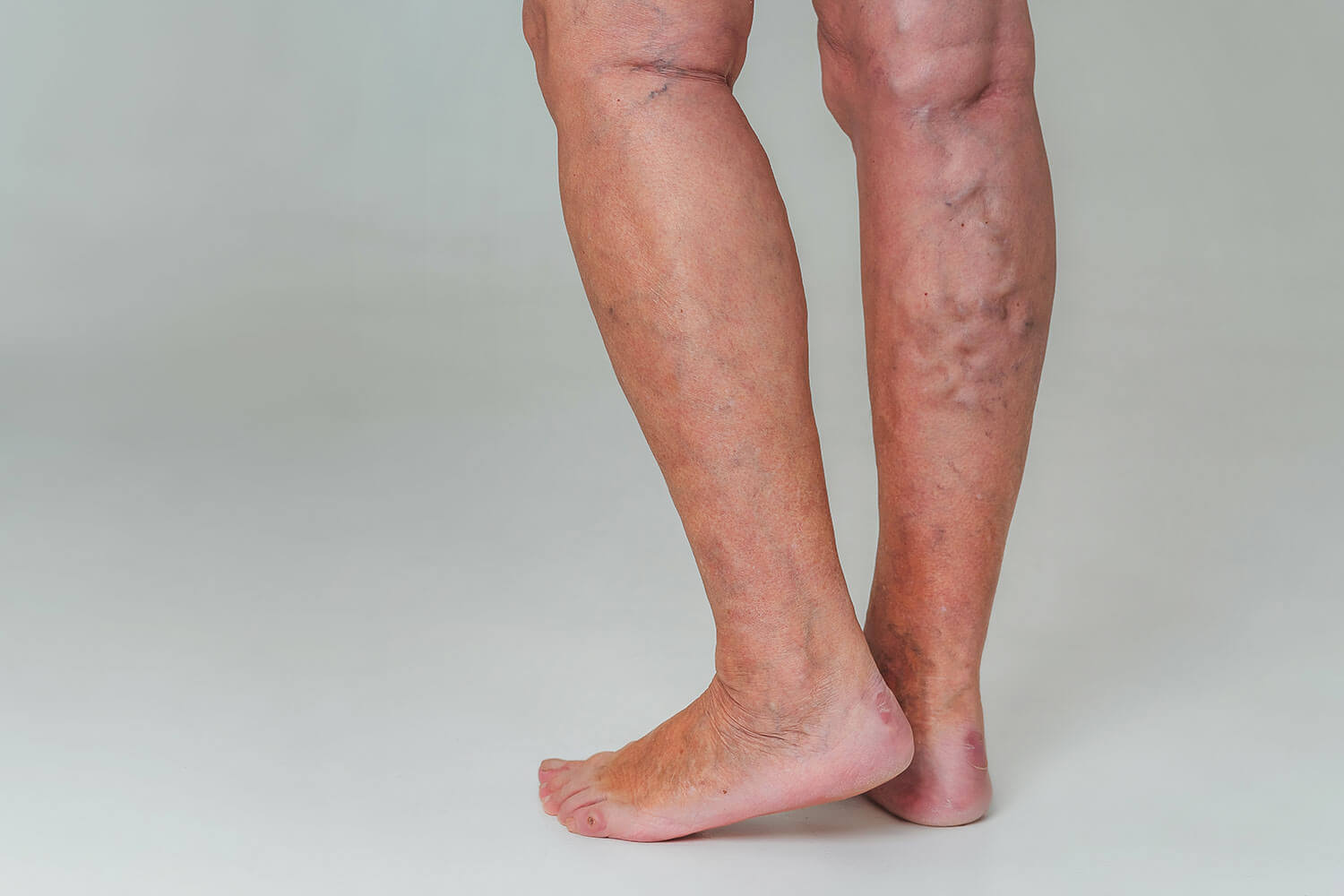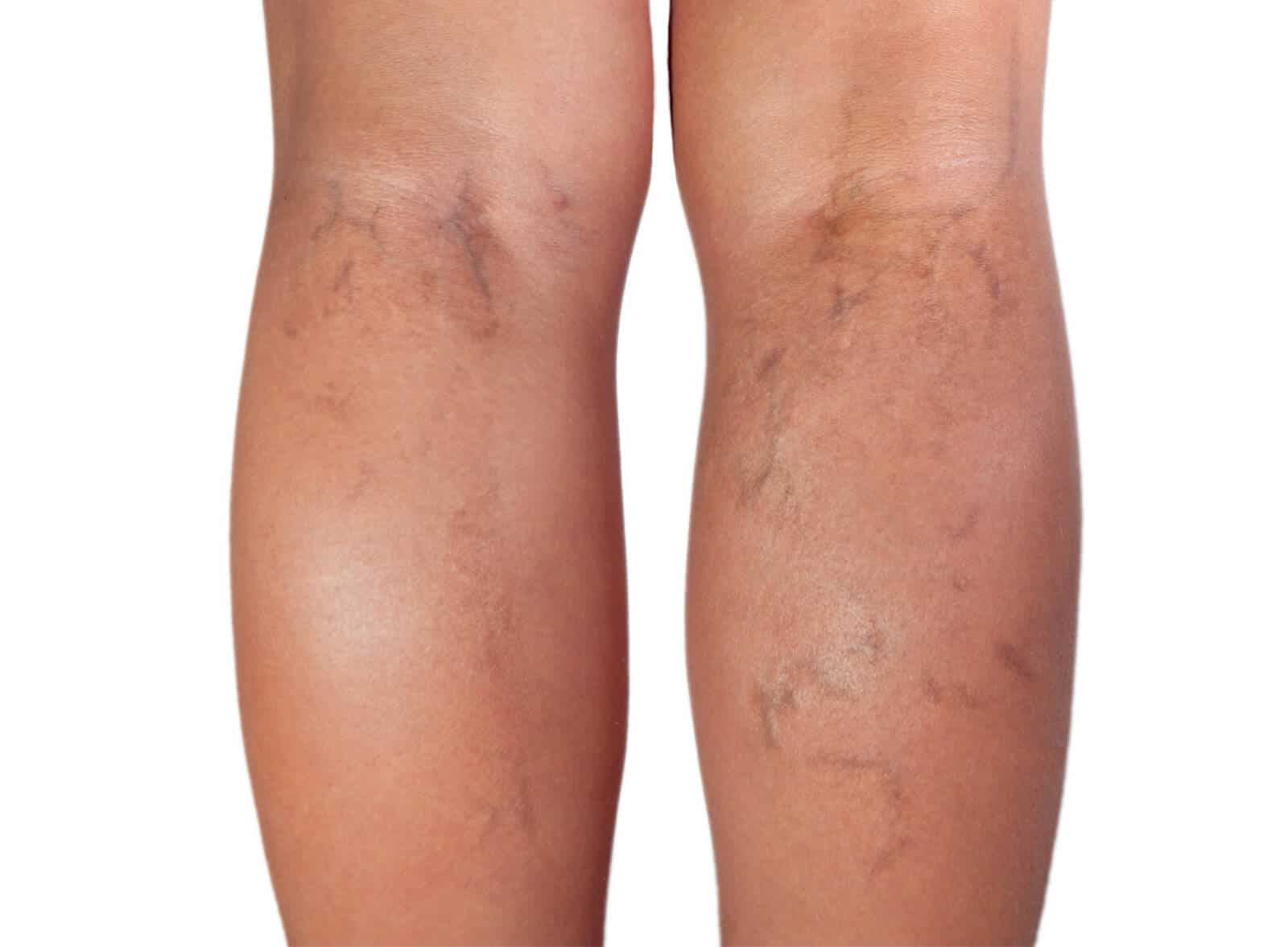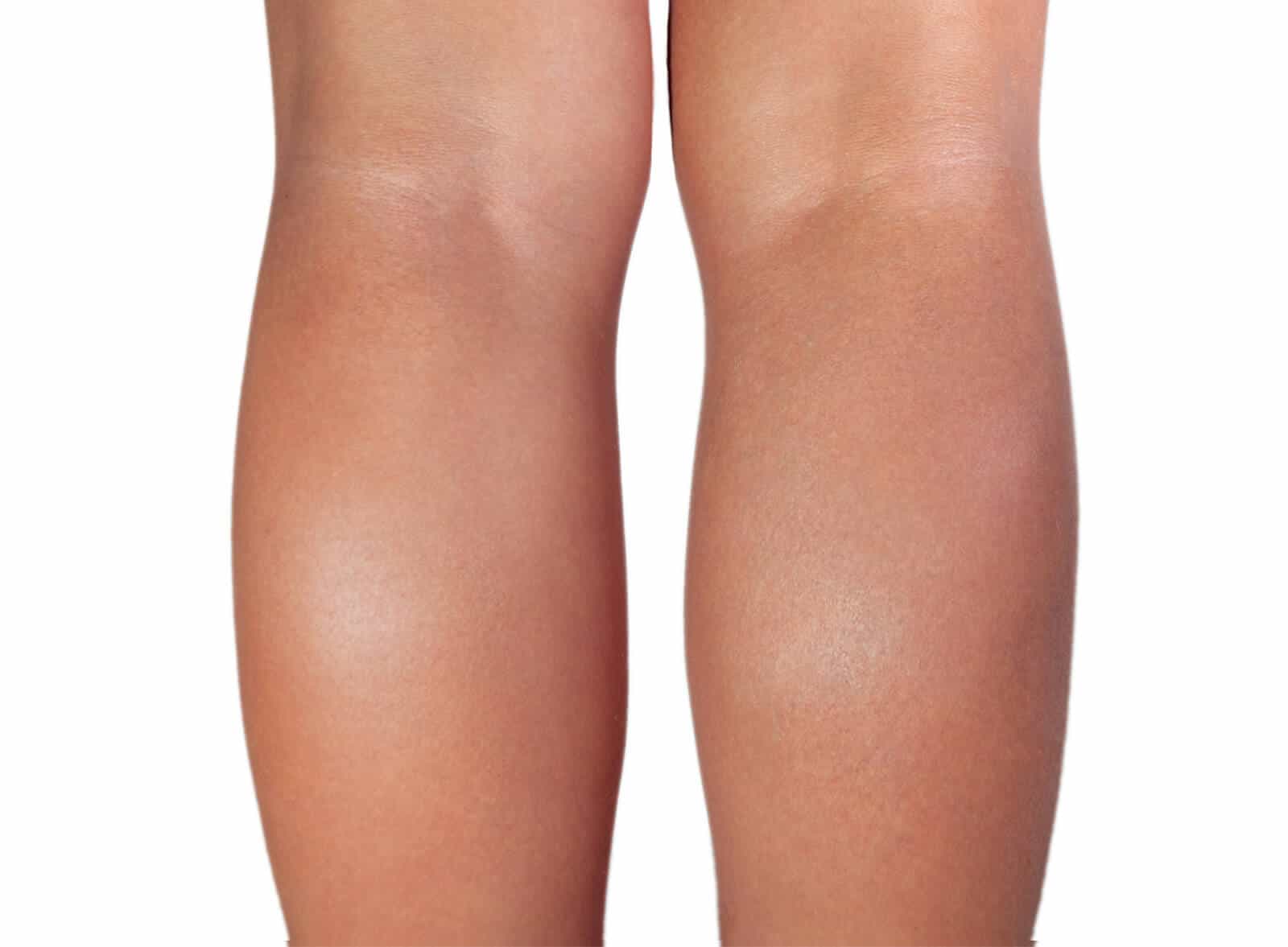Venous Insufficiency
What is Venous Insufficiency?
Whereas arteries carry oxygen-rich blood away from the heart and into your tissues, veins carry deoxygenated blood from other parts of your body back to the heart. Because of this looped structure of the vasculature, it is important that the blood always flows in one direction. To help with this, your veins have small structures called valves that prevent blood from flowing backwards.
Over time, these valves can weaken, making it harder to return blood to the heart. Because of this, blood can pool up in peripheral veins of your body, particularly the legs, where blood has a long distance to flow back uphill to the heart–this is known as venous insufficiency. This can cause a variety of issues, and thus it is important to have venous insufficiency addressed.
Venous Insufficiency Causes
Valves in the veins do eventually begin to degrade with age, as does the venous wall, contributing to the inability to push blood back up from the legs to the heart. More severe cases of this phenomenon are called ‘varicose veins’, and are somewhat common in people over the age of fifty, particularly women. Varicose veins are veins in which the valves that prevent the backflow of blood are damaged or missing entirely, leading to larger, visible veins under the surface of the skin that are swollen with blood that is pooling in the vasculature.
The other major cause of venous insufficiency is an occlusion due to a blood clot–or deep vein thrombosis (DVT). In this case, the ability of blood to flow upward towards the heart is thwarted by the presence of a blockage. With the blood unable to freely move past the clot, pressure builds in the vein and can eventually overcome the valves, even if they were once functioning correctly. Given that a DVT can cause major complications, like a pulmonary embolism, it is imperative that these be correctly diagnosed and treated.
Risk factors of venous insufficiency include:
- Advanced age
- History of blood clots, or varicose veins
- Obesity
- Hypertension
- Pregnancy
- Smoking
- Cancer
- Muscle weakness or leg injury
- Family history of venous insufficiency
- Sitting or standing for long periods (sedentary lifestyle)
Venous Insufficiency Symptoms

The symptoms that present with venous insufficiency depend on how progressed the disease is, and so it is important to recognize them early and seek treatment:
- that worsens as you stand and is relieved with elevation of the feet
- Throbbing, aching, or heaviness in the legs
- Color changes on the skin of the legs, particularly around the feet
- New varicose veins
- Flaking or itching skin on the legs or feet
- Swelling of the legs, ankles, or feet (edema)
- Stasis ulcers on the legs
How is Venous Insufficiency Diagnosed?
Generally, a physician can diagnose venous insufficiency by means of understanding the associated symptoms and requesting a duplex ultrasound. This technique is non-invasive and uses sound waves to visualize the flow of blood through the vasculature.
Similar to an angiogram for peripheral arterial disease (PAD), a vascular specialist can perform a venogram, in which a small amount of contrast dye is used to show the blood flow under x-ray. In this case, the cause of the disease can be determined and treatment can begin immediately.
Venous Insufficiency Treatment
Somewhere between six to seven million people in the U.S. are currently diagnosed with venous insufficiency, with over 150,000 new cases every year, and the majority of cases being women. Depending on the stage of the disease, treatment can be as easy as the introduction of compression stockings to as extensive as full surgery–all the more reason to catch the disease as early as possible. The mode of treatment depends on many factors, including the patient’s age, how they respond to medications, how severe their disease is, and more.
Typical treatments include:
- Medications to improve blood flow
- Compression stockings
- Removal of the vein (phlebectomy)
- Chemical ablation of the vein (sclerotherapy)
- Laser ablation of the vein
- Venous bypass
At Palm Vascular Centers, we offer a variety of treatments for varicose and spider veins, determined by your vascular specialist upon consult and dependent upon the severity of the condition. All of our procedures are minimally invasive with a quick recovery time, so you may return to your normal daily activities within hours.


Radiofrequency Ablation
Phlebectomy
Sclerotherapy
Venous Stenting
In cases of venous insufficiency due to venous compression of deep veins, we may employ a stent. Like the arterial stents mentioned on our PAD page, these are metal mesh tubes used to provide support to the vessel, and are placed permanently.


